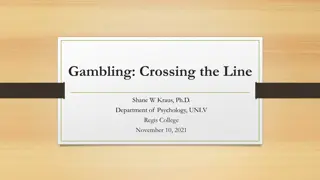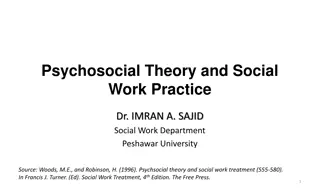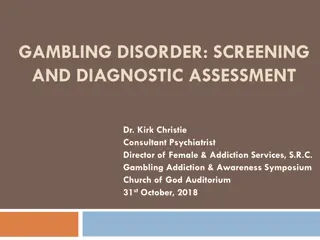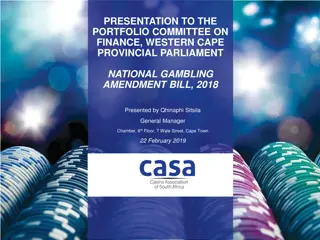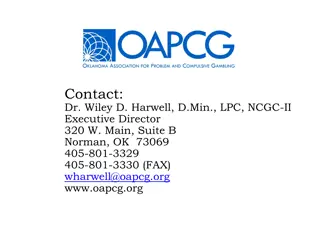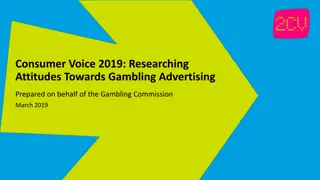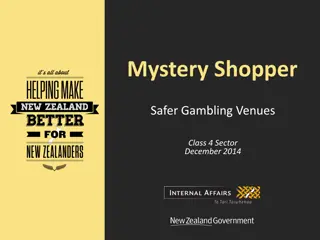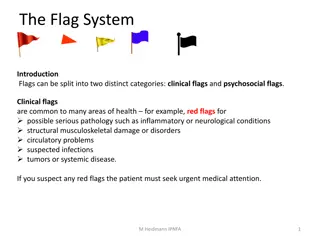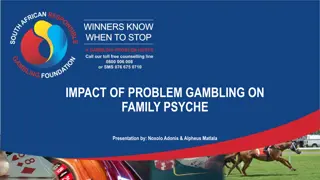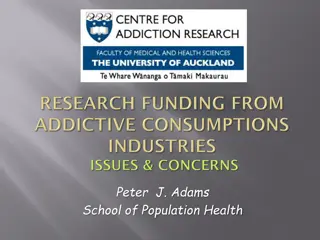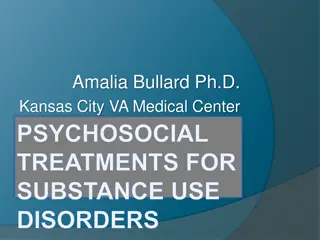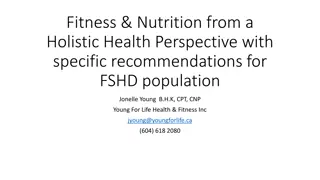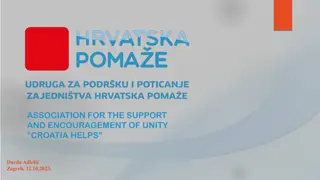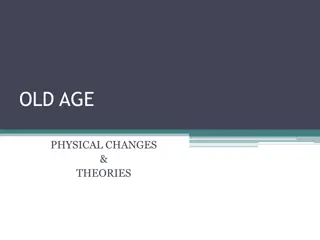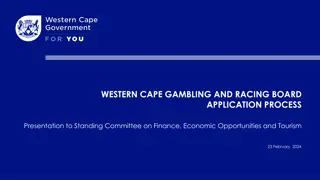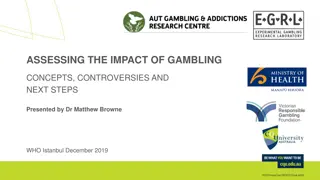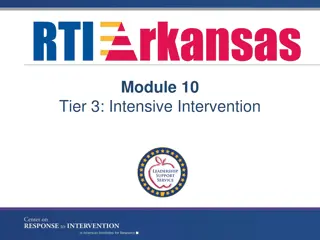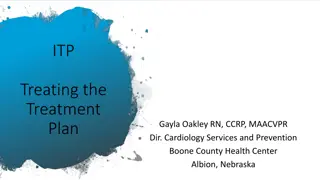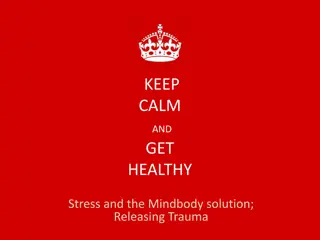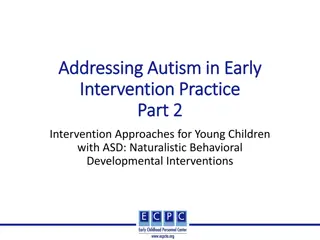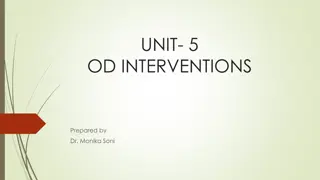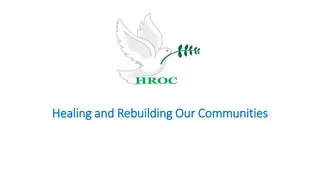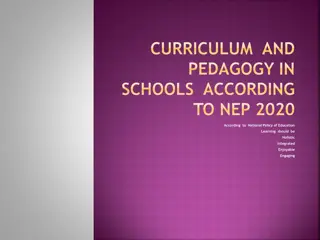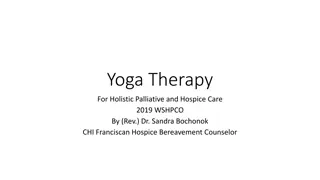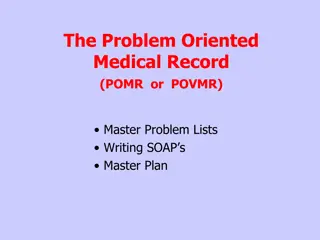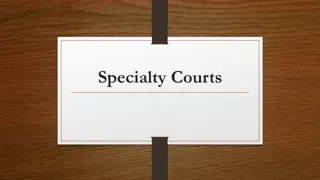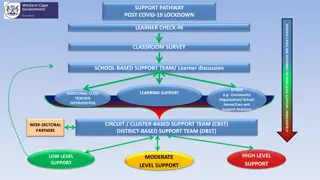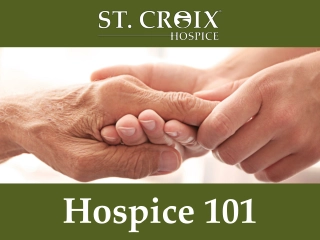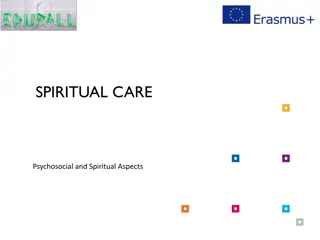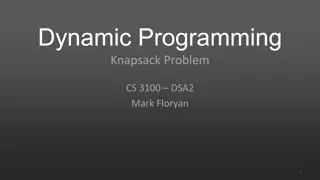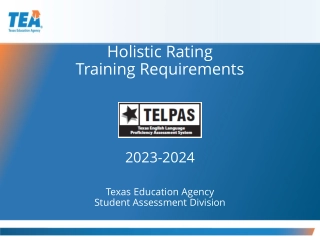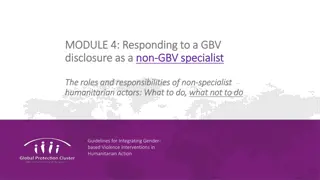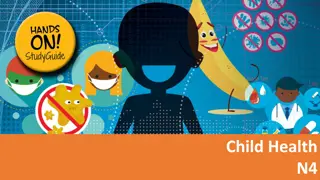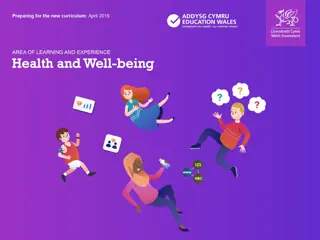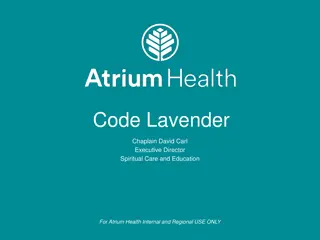Psychosocial Interventions in Problem Gambling: A Holistic Approach
Explore the comprehensive framework of psychosocial interventions for problem gambling, including motivational interviewing, cognitive-behavioral therapy, self-esteem building, life skills training, social network building, goal planning, and more. Learn about the core competencies needed for a recovery-based approach, conversation basics, and the use of mapping as a tool to better understand clients' situations. Gain insights into building strengths, identifying resources, and supporting individuals in their journey towards recovery and harm reduction.
Download Presentation

Please find below an Image/Link to download the presentation.
The content on the website is provided AS IS for your information and personal use only. It may not be sold, licensed, or shared on other websites without obtaining consent from the author. Download presentation by click this link. If you encounter any issues during the download, it is possible that the publisher has removed the file from their server.
E N D
Presentation Transcript
GamCare Toolbox: psychosocial interventions Conversation Basics 1. Social network building 4. Node Link Mapping 2. Life skills training 5. Identifying strengths and resources 3. Cognitive behavioural therapy 6. Goal planning 4. Building self esteem 5.
The Psychosocial Approach Motivational Interviewing Cognitive Behavioural Therapy Self Esteem Building The Life Skills Training Node Link Mapping Psychosocial Approach Social Network Building Goal Planning Peer Support
1. A recovery based approach Core competencies: Use FRAMES and OARS whilst delivering interventions Assess the needs of problem gamblers and affected others Offer practical advice on limiting time, access and money Understand our Model of Care Show empathy and active listening Signpost/refer clients as needed including debt advice, GamCare treatment, GA, FAMANON Deliver a range of evidence-based interventions according to need Provide appropriate information and advice Deliver Signpost to GamCare web based self-help psychoeducation on cognitive distortions Identify how gambling related harms can increase risk Identify and manage risk and safeguarding issues Response appropriately to suicidal ideation Agree treatment goals Deliver psychosocial intervention Covered in Safeguarding training Competency for Practitioners only
Conversation basics Here we provide you with a framework for the basics that should underpin an initial conversation with a service user. These basics should enable you to identify the problem and determine the appropriate intervention
Conversation basics: Activity In pairs, roleplay an initial conversation between a professional and a service user: Professional: use the conversation basics framework to lead the conversation Service user: use the character card to make the call as the service user in your example
Mapping as a tool What is it? Using visual representations e.g. diagrams, flowcharts, to capture and explore the client s situation What are the benefits? Great at capturing circular thinking, feedback loops and links Proven to reduce barriers that distort communication Make treatment discussions more memorable Can focus clients on key areas Easy to share record of discussion with supervisors
Mapping as a tool Ideas / thoughts in a box: nodes Write and draw together Links (named or not) show the relationship between nodes Explore the links. How are the nodes linked? What do the links mean? Explore and unpack each node Node
Mapping as a tool Free Maps: service user and professional build a map from scratch 1. Guide Maps: service user fills in a pre-formed map 2. Hybrid Maps: service user begins with a guide map but expands out freely 3.
Free map Free map created during a session on drug relapse Routes to Recovery
Guide map GamCare: tier 2 & 3 Socioeconomic, mental health, etc... Remember to Listen reflectively!! Link everything to risk! Use the convo basics for calls
Hybrid map Traits & characteristics Skills Need to build more strengths: - Resilience - Patience!! - Assertiveness How do I do this? Strengths & Resources Support Family & friends
Identifying Strengths and Resources
Identifying Strengths and Resources Assessment can often focus on negative aspects of a person s life. However it is possible to organise the assessment process to maximise discussion of recovery capital in order to empower the client to develop their own recovery plan.
Strengths and resources map Characteristics Skills & work Knowledge Strengths & Resources Health & physical Problem solving/coping Values & beliefs Relationships & social
Identifying Strengths and Resources: map 1. Work in pairs to build a free map exploring your colleague s strengths 2. As you build the map: Explore how they can use their strengths more effectively in their lives Identify if there are any other strengths they want to build
Goal Planning: detail map Specific Actions When will you do each action? My Goal: Strengths you have or need Helpful people & thoughts Possible problems: Solutions:
Reviewing goals Review goals at least monthly Celebrate and examine successes: what did the service user do to make it happen? Explore unsuccessful attempts: what got in the way? What can they learn from this attempt? What will they do differently next time? Re-set goals and actions and set next review point
Blocked goals and self efficacy Increase self efficacy by: Looking at blocked goals Identifying what is blocking change Problem solve ways to overcome the blockage Aim: to build belief that service user has control and can make things happen, and is empowered to try new things
Blocked goals and self efficacy Goal being blocked: What are the skills required and what strengths do you have? How have you achieved similar things? What is the block to achieving the goal? What can you learn from this? Who can be recruited to help? Can it be broken down into tasks? Alternatives to my block are
Building Self Esteem Using maps to build self esteem 1.
Building self esteem Aim: to build a core of self esteem that is not linked to the successes and failures of every day life Increase self esteem by: Challenging negative self talk Practice self care Reminders of strengths and achievements Seeking support from others Doing fun or relaxing things
Building self esteem: Activity Ways I can look after myself Things I can say back to my inner critic What are my strengths and achievements? Things I can do to treat myself when I m feeling down Who can I talk to for support Things I can do to improve my self esteem
Social network building Recovery is a social process Recovery is based on the power of community: the more people are helping you, the more likely you are to succeed Building social support for change boosts the individual s recovery capital outside of the formal treatment environment People are influenced in thinking and actions by the people surrounding them, and they learn how to recover by copying others who have achieved recovery themselves
Social network building Our role Discuss and explore service user s social network Encourage them to develop a support system For Practitioners: discuss whether it is useful to invite a supportive, appropriate person to a session Help them find community groups or recovery to be part of
Social network building Involving family members (practitioners only) Early on, ask the service user if there is a supportive person they would like to bring to a session Rehearse the invitation or provide support by phoning/email/text together in the session Make it clear that this is not family therapy. The aim is to identify how this person can best help the service user in their recovery journey.
Social network building Community and recovery-based groups Have a comprehensive list of local groups Know their requirements and how each group works Discover the service user s interests Talk through any negative perceptions to joining recovery or general groups Importantly: be the bridge - help with integration
Life skills training How might developing these skills aid recovery? Time management / organisational Financial Communication / social Assertiveness Managing emotions Problem solving Stress management / relaxation 1. 2. 3. 4. 5. 6. 7.
After care (Practitioners only) Skills consolidation 1. Action planning 2.
After care At the end of treatment, it s important to think about what the client needs to support their recovery in the future. Transitioning from a series of treatment to owning their recovery themselves can be a difficult time for clients. While the risk of relapse will diminish over time it will not go away completely.
After care Level of intervention Brief interventions Extended brief interventions Psychosocial treatment Relapse / at risk of relapse After care examples Information about mutual aid Referrals Monthly check up sessions / calls / emails Consolidating skills learned in treatment Relapse prevention work Action planning Monthly check up sessions / calls / emails Referrals Mutual aid
After care skills consolidation For those who ve undergone tier three treatment with psychosocial interventions, prepare for aftercare by helping to consolidate the skills learned in treatment. What have they learnt? How have they changed? How have they overcome obstacles? What do they need to keep working at?
After care action planning Help the service user build a picture of their life in recovery and set goals together: Clarify priorities Build positive routines, e.g. new hobby/job Practice good self care Agree recovery rituals Outline a relapse prevention plan Reminder of their strengths and resources Set them up with a Recovery Weekly Review
After care action planning Week beginning: Recovery Area Success Rough spots Lessons learnt What to do now? Not Gambling Self Care Positive relationships Increasing hobbies What else for them? What else is important?
Self care The ABC of self-care 1. Self care in practice 2. Stress management: the lifeboat 3.
Self Care Awareness Balance Connection Attune Know Practice Accept Have a personal life Enjoy activities To yourself To others To the bigger picture To the idea that you don t have to do this alone The ABC of Self Care (Saakvit & Pearlman 1996)
Self Care Physical? How can we practice self care in these areas? Emotional? Psychological? Spiritual? Professional?
Self Care Lifeboat to be replaced with new image.
Self Care Five career sustaining behaviours Maintain sense of humour Spend time with partner/family Maintain balance between professional and personal lives Maintain self-awareness Maintain sense of control over work responsibilities
Professional Development Your new workbook 1. First three months in the role 2.
Did we achieve our goal today? Goal: Build understanding and application of a range of psychosocial interventions to build a holistic approach to recovery.
Summary: Activity A recovery based approach: focusing on individual strengths, positive identify and self- efficacy Safe, effective services: identification and management of harm and risk Service user choice: providing relevant information and respecting service user autonomy Evidence based practice: well-researched techniques based on psychosocial intervention Stepped care: the right service at the right time 1. 2. 3. 4. 5.


